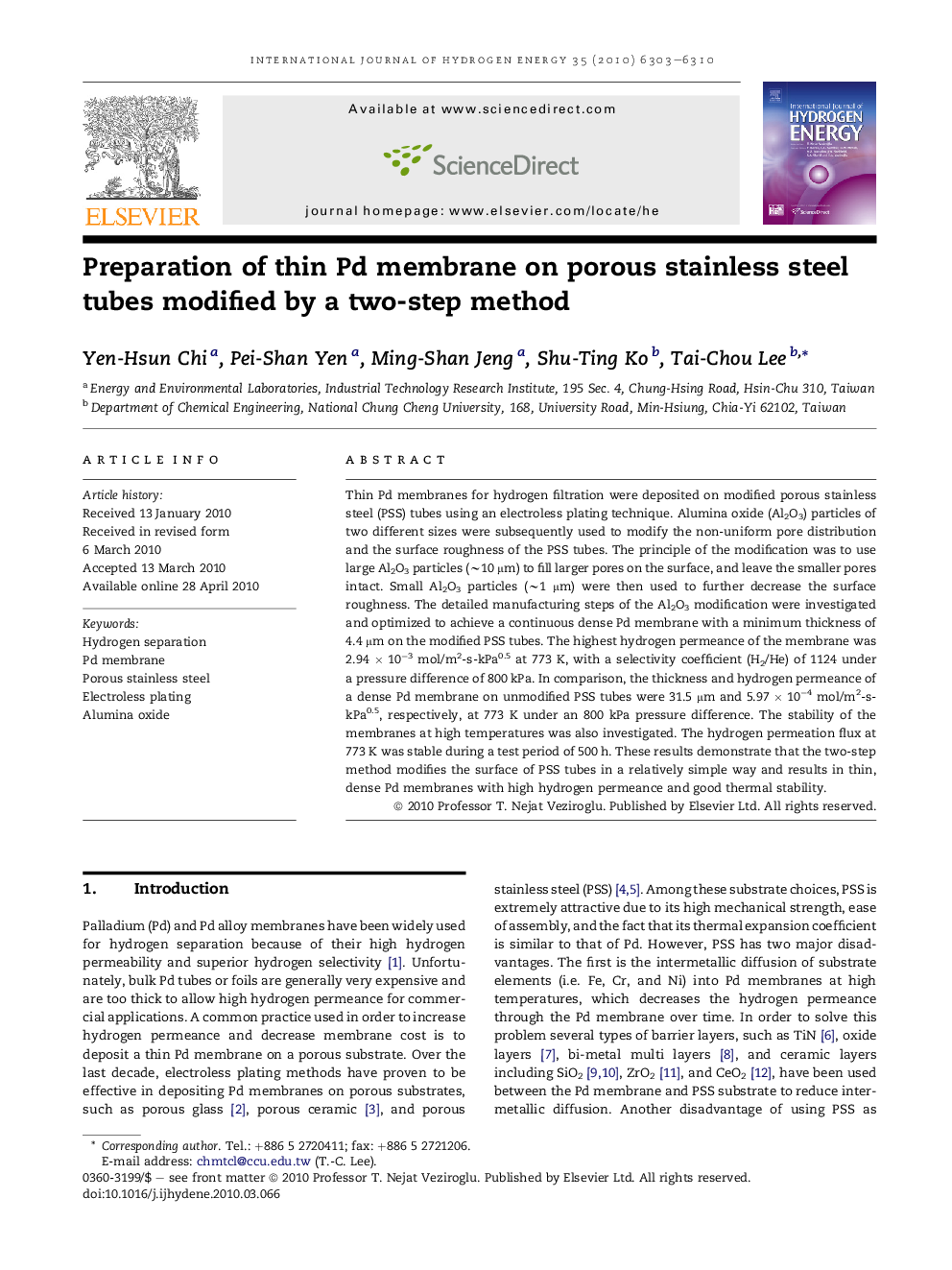| Article ID | Journal | Published Year | Pages | File Type |
|---|---|---|---|---|
| 1277091 | International Journal of Hydrogen Energy | 2010 | 8 Pages |
Thin Pd membranes for hydrogen filtration were deposited on modified porous stainless steel (PSS) tubes using an electroless plating technique. Alumina oxide (Al2O3) particles of two different sizes were subsequently used to modify the non-uniform pore distribution and the surface roughness of the PSS tubes. The principle of the modification was to use large Al2O3 particles (∼10 μm) to fill larger pores on the surface, and leave the smaller pores intact. Small Al2O3 particles (∼1 μm) were then used to further decrease the surface roughness. The detailed manufacturing steps of the Al2O3 modification were investigated and optimized to achieve a continuous dense Pd membrane with a minimum thickness of 4.4 μm on the modified PSS tubes. The highest hydrogen permeance of the membrane was 2.94 × 10−3 mol/m2-s-kPa0.5 at 773 K, with a selectivity coefficient (H2/He) of 1124 under a pressure difference of 800 kPa. In comparison, the thickness and hydrogen permeance of a dense Pd membrane on unmodified PSS tubes were 31.5 μm and 5.97 × 10−4 mol/m2-s-kPa0.5, respectively, at 773 K under an 800 kPa pressure difference. The stability of the membranes at high temperatures was also investigated. The hydrogen permeation flux at 773 K was stable during a test period of 500 h. These results demonstrate that the two-step method modifies the surface of PSS tubes in a relatively simple way and results in thin, dense Pd membranes with high hydrogen permeance and good thermal stability.
